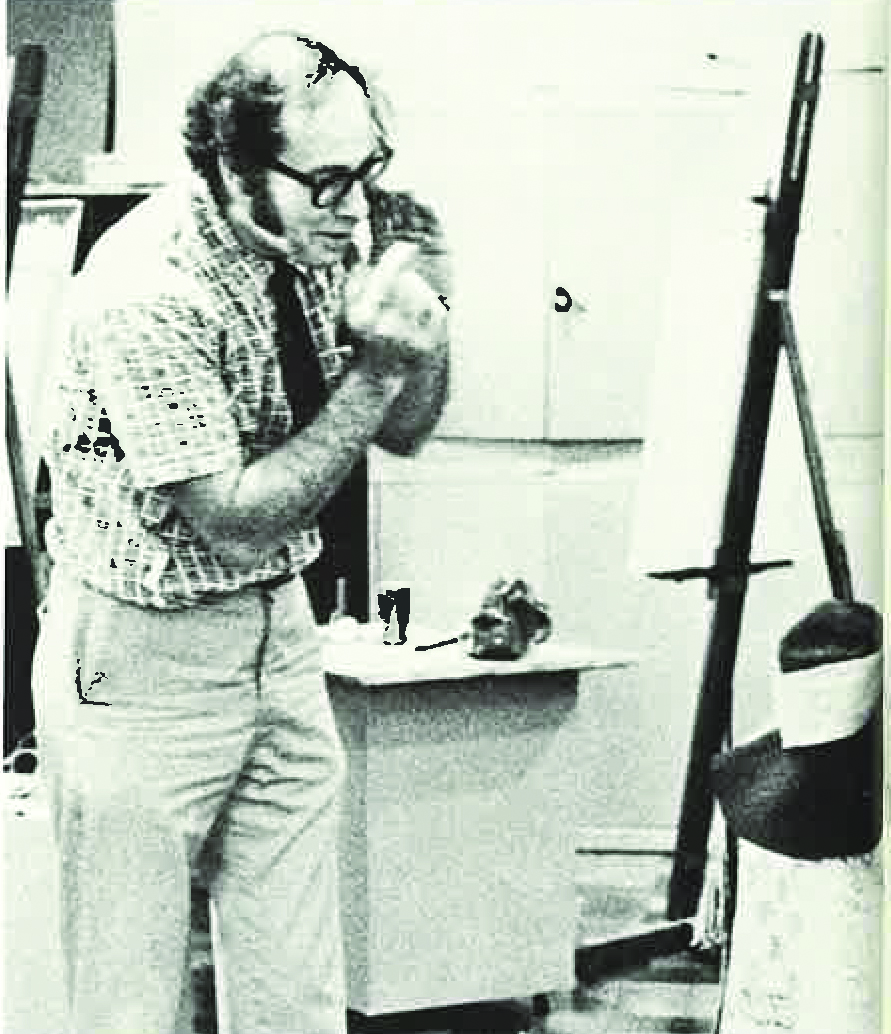

George Chavatel
George Chavatel, who taught at Emory & Henry for 29 years beginning in 1965, was known for his strong advocacy of both his students and regional artists. He inspired countless students toward successful careers and encouraging community appreciation of the arts through enhanced art exhibition throughout the region.
“George was the kind of person who was an individual. He had his own ideas about many things. I think he liked being his own boss and being at a smaller school. He could explore many areas. He taught art history, painting, sculpture and whatever there was to be taught. He really enjoyed that. He met many different students and was supportive of the sports program. He felt good about the students he mentored and who have done well in many areas not just the arts. He was a great supporter of the arts. After he died, there were six different events honoring him. I’ve been very touched by that, and he would have been too. He didn’t know the extent of his influence,” says Barbara Chavatel.
After winning football games, Chavetel would decorate Wiley Hall with posters celebrating. Eventually the team named him the 12th man.
“George enjoyed doing things for the college, like the posters. He didn’t have to do. He did it because he wanted to support the programs and the students. When anybody retired, he put posters and banners up in honor of whoever was retiring. It was part of his tenure there. People looked forward to it,” Barbara says.
A native of Highlands Springs, Virginia, Chavatel received his bachelor of fine arts degree at the College of William & Mary and his master of fine arts degree at the University of Georgia in Athens. He pursued additional study at William & Mary and at New York University.
His own art was exhibited extensively at museums and universities throughout the Midwest and the South, including the Virginia Museum of Fine Arts in Richmond; the Carroll Reece Museum in Johnson City; the Pensacola Museum in Florida; and the Southeastern Gallery of Contemporary Art in Winston-Salem, North Carolina. His works have been purchased for private collections, including those of R.J. Reynolds Company and Virginia businessman Eugene Worrell.
“Within George Chavatel lay all possible genius or art. He rendered superbly, which is what one needs to first impress the masses. He adored manipulating pictoral space, had composition down cold by second nature, and thoroughly enjoyed creating sophisticated optical illusion, sometimes turning out oversized canvases which functioned as wall sculpture. And it was not for nothing that he considered Rembrandt the best, the true painters’ painter. As a painter, Chavatel was something the art world reveres with the rarefied adjective of ‘painterly,’ separating masters from a world of dilettantes, designers, illustrators and craftsmen dependent upon linear form,” says Robert Weisfeld, a former student.
A tireless volunteer for projects that promote the arts, Chavatel was a guest artist, instructor, panelist and lecturer at art conferences and colleges. He received art awards from the Virginia Beach Art Association, the Staunton Art Show and Sale, the Montgomery Museum of Art in Alabama and Appalachian State University.
Chavatel was 6 foot, 3 inches tall. At one point, a small child dubbed him “George Giraffe,” a name that the art professor took on as a sort of trademark. Frequently drawings of a tall giraffe with glasses would show up in Chavatel’s art, demonstrating the whimsical side of this master of painting, drawing and calligraphy.
A tribute from Robert Weisfeld
“Pulling an old ball point out from his how-square-can-you-get plastic chest pocket pen holder, Chavatel would throw lines. Dip a brush in ink, do more, dilute ink with water, create tonal scales, do some farewell background wet work and create something which lingered in viewer imagination. The he’d do another, using the same materials in reverse order.
“By the time he retired, Chavatel had come to be not just an unparalleled regional artist, but a singular extension of art itself. He will remain so.”